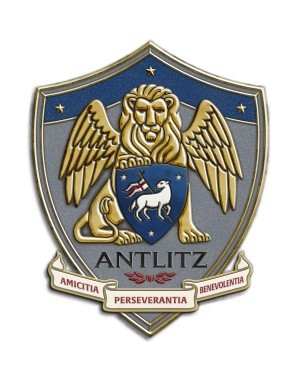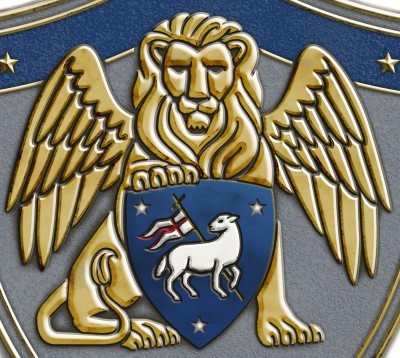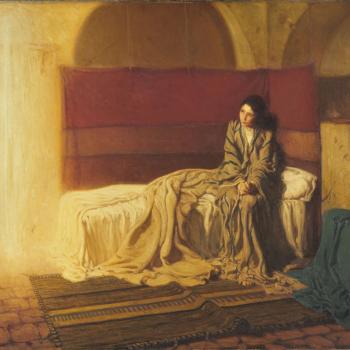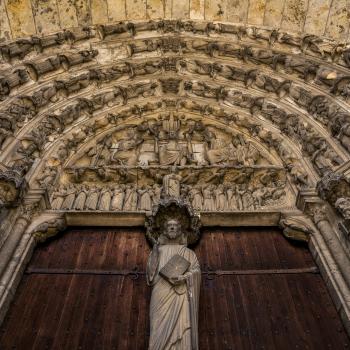 In addition to buying loads of diapers and attending birthing class with Ursula, our German midwife, the primary way I prepared for fatherhood was to design a family crest. I spent the better part of gestation considering what parts and pieces, characteristics and virtues I most want my progeny to embody. After many hours of prayer, reflection and hand drawn concepts, our graphic designer friend, Weylon Smith, put it all together in a way that captured exactly what we dreamed in a simple and elegant way. I couldn’t be happier with his work.
In addition to buying loads of diapers and attending birthing class with Ursula, our German midwife, the primary way I prepared for fatherhood was to design a family crest. I spent the better part of gestation considering what parts and pieces, characteristics and virtues I most want my progeny to embody. After many hours of prayer, reflection and hand drawn concepts, our graphic designer friend, Weylon Smith, put it all together in a way that captured exactly what we dreamed in a simple and elegant way. I couldn’t be happier with his work.
The crest pictures the man that I aspire to be and my deepest hope for our children. It’s loaded with symbolism and meaning depicting the virtues, ideas, and characteristics that have most captured my heart, mind, and imagination and the ones I think our impoverished world most needs. The crest is composed of a variety of elements – everything means something. The simplest way to break it down is that there are three sets of three and this trinity of trinities find their dénouement in the one centerpiece.
The first two sets are symbolized simply by stars. Humans have been making their way in the world via celestial navigation for millennia – our family crest walks this well-worn path (for more on this check out these posts on celestial navigation). The first set symbolizes anchors for the virtuous life and the second symbolizes metaphysical guideposts for the journey. The third set includes the three specific characteristics we believe our children need in order to make it in the world and the world needs in order to make it. All find their fulfillment in the Lion and the Lamb.
In what follows, I’ll identify and explain the meaning each of the elements:
THE FIRST SET of threes includes the three stars at the top of the crest above the Lion’s head. These stars symbolize Wisdom, Love, and Justice. This threesome is a combination of the Christian and cardinal virtues (e.g. Faith, Hope, and Love & Justice, Prudence, Fortitude, and Temperance respectively).

LOVE is the center star and the crown jewel of the crest. Love is the telos of both faith and hope; it is the thing to which they point and find their perfection. According to St. Paul, love is the chief of the Christian virtues: “And now faith, hope, and love remain – these three; but the greatest of these is love” (1Cor 13:13). Love is the central virtue we hope to cultivate in our children because it is this – their love – that will determine everything else. If they get love right, all other things will fall into place. This is why St. Augustine writes: “…the greater the measure in which love dwells in a person, the better is the one in whom it dwells. For when there is a question as to whether a person is good, one does not ask what she believes, or what she hopes, but what she loves.” [1]. Lastly, getting love “right” means loves rightly ordered. Summarizing St. Augustine’s teaching, C.S. Lewis writes this in The Abolition of Man: “St. Augustine defines virtue as ordo amoris [order of love], the ordinate condition of the affections in which every object is accorded that kind of degree of love which is appropriate to it.” [2] May they love the right things in the proper order.
JUSTICE likewise is the chief of the cardinal virtues. It is at star on the upper right of the crest; it is at the right hand of love. The justice I refer to here is not forensic – the justice of the courtroom. It’s not less than this, but is more expansive. The Romans classically provide the world with the aim of justice, namely to give each its due. Justice refers to harmony. A song from Radiohead captures it perfectly: justice is “everything in its right place.” [3] It is the regulating virtue or principle. On a more personal level, “Justice, the overall virtue, is the harmony of the soul as health is the harmony of the body…The harmony is hierarchical, not egalitarian…Justice is rightness, righteousness. Justice is beauty of soul, soul-art, soul-music.” [4] May they put everything in its right place.
WISDOM is lived knowledge. It refers to more than just the life of the mind. Wisdom is the intellect graced with direction for the good at the right time. The wisdom we desire is not merely theoretical but is a practical wisdom. In the Institutes, John Calvin writes “nearly all the wisdom we possess, that is to say, true and sound wisdom, consists of two parts: the knowledge of God and of ourselves.” [5] May they know God and know themselves and consequently know how they ought to be in the world.
THE SECOND SET includes the stars at each corner of the Lion’s shield. These stars symbolize the three transcendentals: truth, goodness, and beauty. It is my hope that these three serve as the metaphysical guiding lights capturing their mind, heart, and imagination and so nurture their soul.

TRUTH is calling a thing by its right name. Though infinitely deep, truth is also profoundly simple. Aristotle defines truth with profound simplicity in a series of 40 or so monosyllabic words. This is how one determines what is true and what is false: “To say of what is that it is not, or of what is not that it is, is false, while to say of what is that it is, and of what is not that it is not, is true.” [6] May they be lovers and defenders of truth.
GOODNESS The correspondence of a thing to its end. Jesus instructs us as to what is required for humans to be good: “You shall love the Lord your God with all your heart and with all your soul and with all your mind. This is the great and first commandment. And the second is like it: You shall love your neighbor as yourself.” (Gospel of Matthew 22:37-39). Goodness is related to love. The quality and integrity of one’s character – the degree to which they are good – corresponds to the ordering of their loves. May they love the right things with the degree of love appropriate to it.
BEAUTY is the tricksiest (and most dangerous) to try and capture. Beauty is integrally connected to the Good. It is something like the form, or radiance, or power, or glory of Goodness. To paraphrase Pope John Paul II, beauty is the form of the good. [7] Beauty, or the form of the good, manifests itself in manifold ways such as visual art, music, and perhaps most of all, in a saintly life. Cultivating an appreciation for beauty here in the Shadowlands is important that we might more fully appreciate the fullness of beauty when we see things face to face. In Marilynne Robinson’s Gilead, John Ames comments on this idea: “I know this is all mere apparition compared to what awaits us, but it is only lovelier for that. There is a human beauty in it. And I can’t believe that, when we have all been changed and put on incorruptibility, we will forget our fantastic condition of mortality and impermanence, the great bright dream of procreating and perishing that meant the world to us. In eternity this world will be Troy, I believe, and all that has passed here will be the epic of the universe, the ballad they sing in the streets. Because I don’t imagine any reality putting this one in the shade entirely, and I think piety forbids me to try.” [8]
And so, may they adore Him “whose beauty is past change.” [9] May they love beauty, create beauty, live beautifully.
THE THIRD SET includes three words (in the obligatory Latin): amicitia, perseverantia, and benevolentia. These are the three things they’ll need to make it in this life.

AMICITIA is Latin for friendship. Lewis writes, “To the ancients, Friendship seemed the happiest and most fully human of all loves; the crown of life and the school of virtue. The modern world, in comparison, ignores it.” [10] It probably comes as no surprise that I think he’s right. In order to know God and to know themselves they’ll need good friends. Knowing oneself requires the dialectic of friendship, as Paul Ricoeur writes that we are only ourselves to the degree to which we are ourselves to another. [11] Lewis provides a slightly different angle on this same idea: “In each of my friends there is something that only some other friend can fully bring out. By myself I am not large enough to call the whole man into activity; I want other lights than my own to show all his facets.” [12] May they have friends whose wounds are faithful (Prov 27:6) and friends who stick closer than a brother (Prov 18:24).
PERSEVERANTIA is Latin for perseverance. Other synonyms include steadfastness and persistence. We chose this characteristic because life is hard. They’ll need a healthy dose of perseverance to be successful. What more can I say? May they have thick skin, a strong back, and an indomitable spirit.
BENEVOLENTIA is Latin for kindness. Life is hard; the world is cruel; and kindness is highly undervalued both in God and in ourselves. As my great-grandmother told my father and my father told me: “Manners will take you to places money never could,” so it is with kindness. There is a quiet power to kindness; one that is surprising and disarming. It may also be the best way to be useful in the world. Herebert’s exhortation is fitting: “Be useful where thou livest, that they may both want, and wish thy pleasing presence still. Kindness, good parts, great places are the way to compass this. Find out men’s wants and will, and meet them there. All worldly joys go less to the one joy of doing kindnesses.” [13] May they be kind to all, especially those least expecting it.
 THE CENTER of the crest is the Lion and the Lamb. The golden lion and blue shield and accents are inspired by the Piazza San Marco, the grand St. Mark’s Square in Venice, Italy. The floating city of canals and bridges enchanted me ever since I proposed to Susan on a gondola in Venice. Ever since then, I’ve been captivated by the golden winged lion of St. Mark and that hue of blue. In St. Mark’s Square, the lion rests his paw upon a book. I chose, instead, a shield with a lamb upon it. The lamb on the shield was inspired by the lamb in the stained glass window of the Duomo Cathedral in Florence, Italy. The Agnus Dei or Lamb of God holding a banner with a red cross and foreleg lifted is a standard image of Christian iconography.
THE CENTER of the crest is the Lion and the Lamb. The golden lion and blue shield and accents are inspired by the Piazza San Marco, the grand St. Mark’s Square in Venice, Italy. The floating city of canals and bridges enchanted me ever since I proposed to Susan on a gondola in Venice. Ever since then, I’ve been captivated by the golden winged lion of St. Mark and that hue of blue. In St. Mark’s Square, the lion rests his paw upon a book. I chose, instead, a shield with a lamb upon it. The lamb on the shield was inspired by the lamb in the stained glass window of the Duomo Cathedral in Florence, Italy. The Agnus Dei or Lamb of God holding a banner with a red cross and foreleg lifted is a standard image of Christian iconography.
The lion and the lamb motif is inspired by Revelation 5:
And I saw a mighty angel proclaiming with a loud voice, “Who is worthy to open the scroll and break its seals?” And no one in heaven or on earth or under the earth was able to open the scroll or to look into it, and I began to weep loudly because no one was found worthy to open the scroll or to look into it. And one of the elders said to me, “Weep no more; behold, the Lion of the tribe of Judah, the Root of David, has conquered, so that he can open the scroll and its seven seals.” And between the throne and the four living creatures and among the elders I saw a Lamb standing, as though it had been slain…
I absolutely love this scene. John the Revelator is weeping and an Elder tells him to weep no more and beckons him to behold the Lion, the conqueror. When John looks up, expecting to see a mighty lion, the Lion of Judah, he focuses his gaze and sees a Lamb standing as if it had been slain. Jesus is the conquering King precisely because He is the Suffering Servant. This is what I tried to capture with the crest. The might Lion boasts the Lamb upon his shield, His source of strength and His glory.
Jesus, the Lion and the Lamb, is the center of the crest as, I hope, Jesus is the center of my descendants’ lives. This element of the crest captures the Christian faith, what it means to be godly, and what it means to be truly human. It also illustrates what is perhaps the greatest quality I desire in my children: meekness. May they be strong. May they be humble. May they wield their power with poise and meekness.
[1] Augustine, Enchiridion Chapter 117 (Augustine Catechism: Enchiridion on Faith Hope and Charity[2] C.S. Lewis, The Abolition of Man
[3] Radiohead, Kid A.
[4] Peter Kreeft, Back to Virtue: Traditional Moral Wisdom for Modern Moral Confusion
[5] John Calvin, Institutes of the Christian Religion (2 Volume Set)
[6] Aristotle, Metaphysics 1011b25
[7] Pope John Paul II, Letter to Artists, http://www.vatican.va/holy_father/john_paul_ii/letters/documents/hf_jp-ii_let_23041999_artists_en.html
[8] Marilynne Robinson, Gilead: A Novel
[9] Gerard Manley Hopkins, “Pied Beauty” in The Major Works.
[10] C.S. Lewis, The Four Loves
[11] Paul Ricoeur, Oneself as Another
[12] C.S. Lewis, The Four Loves
[13] George Herbert, “The Church-Porch,” from The Complete English Works, 18.










